Kyoto Gion Festival / Sakimatsuri
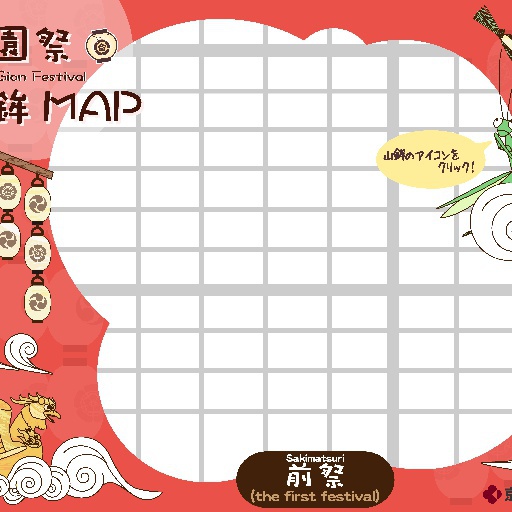
Map of Kyoto Gion Festival / Sakimatsuri Click a "Yamahoko" picture, then you can see the photo and the explanation.
All spots information
39 spots
 Unnamed Category
Unnamed Category
 Shinmachi St.
Shinmachi St.
 Tkatsuji St.
Tkatsuji St.
 Ayanokoji St.
Ayanokoji St.
 芦刈山
芦刈山

Ashikari-yama(芦刈山) The deity figure (a doll) and its clothes are the oldest of those on all the floats. The year 1537 is inscribed on the doll's head. Its "kosode" robe, a short-sleeved kimono, is presumed to have been made in the 16th century, and is designated as one of the important cultural assets in Japan. The scene on this float is derived from an old Noh song, "Ashikari" (A Reed Reaper) based on folklore about a couple living in Settu (the northern part of present Osaka Prefecture), who had to separate because of poverty. The wife went to Kyoto, the ancient Japanese capital, to work at the Imperial Palace. However, she worried about her husband and returned to their hometown, where she found he'd fallen into worse circumstances and become a reed reaper. The front and sides of the float are decorated with artificial reeds. Copyright (c)2019 The Kyoto Shimbun Co.,Ltd. All rights reserved.
 保昌山
保昌山

Hosho-yama(保昌山) The old name for this yama float is "Hana-Nusubito Yama", or the flower thief's yama. The figure on the yama represents Hirai Hosho (956-1036), grandson of Chief Councilor of State Fujiwara Motokata and son of Fujiwara Munekata. He was both a good warrior and a good poet. One day, in order to please a court lady he had fallen in love with, he went to get a branch of plum blossoms from the Imperial garden. Although he successfully took one, a palace guard noticed him. With arrows being shot at his head, he narrowly escaped from the palace. The lady was Izumi Shikibu, a famous poet in the court of that age who later became his wife. Amulets against theft and for happy marriage are given away at this yama. Copyright (c)2019 The Kyoto Shimbun Co.,Ltd. All rights reserved.
 Karasuma St.
Karasuma St.
 Nishikikoji St.
Nishikikoji St.
 Sanjo St.
Sanjo St.
 郭巨山
郭巨山

Kakkyo-yama(郭巨山) While yama floats are usually roofless, this one has a sunshade screen on the top. Another unique point of this yama is that it maintains the traditional style of a decorative upper frame for the body. The board frame is beautifully painted with a colorful flower-like motif on a gold background. The name "Kakkyo" comes from a man in a historical Chinese story. Guo Ju ("Kakkyo" in Japanese) was too poor to feed both his mother and son. Cornered, Guo made the tough decision to abandon his son in the woods to save his mother. However, when he was digging to bury his son alive, he found a pot of gold in the ground, and did his utmost to practice filial piety from then on. Two dolls are on the float: Guo Ju with a plow and his son with red and white peonies. The design of the rear tapestry, which was renewed in 1991, is based on a folding screen from the Momoyama period (late 16th century). Copyright (c)2019 The Kyoto Shimbun Co.,Ltd. All rights reserved.
 岩戸山
岩戸山

岩戸山(いわとやま) This drawn float is named after two Japanese mythical stories, "Kuniumi"(Making of the Land) and "Ama-no-iwato" (Heavenly Rock Cave) in the "Kojiki" (Record of Ancient Matters) and "Nihon-shoki" (the second oldest history book about ancient Japan). According to the myths, Amaterasu Omikami, the Sun Goddess, hid herself in "Ama-no-iwato", the legendary cave, out of anger towards her violent younger brother, Susanoo-nomikoto, and darkness covered the land. The multitudinous gods gathered at Yasu-no-kawara, the riverside in the Plain of Heaven, to discuss how to calm her anger and entice her out of the cave. They made singing birds that never get old and die, cast a divine mirror, made 500 comma-shaped beads, planted Sakaki, the evergreen trees of Mt. Ama-no-kagu-yama, and had Ame-no-uzume-no-mikoto dance in front of the cave to induce the goddess to come out. Three dolls representing Izanagi-no-mikoto, Amaterasu-Omikami and Tajikarao-no-mikoto respectively, are set up on the float. Copyright (c)2019 The Kyoto Shimbun Co.,Ltd. All rights reserved.
 菊水鉾
菊水鉾
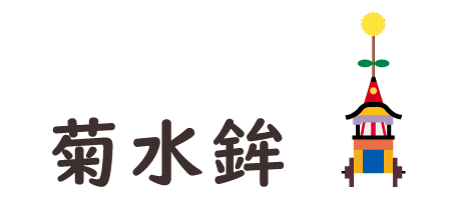
Kikusui-hoko(菊水鉾) The idea for this hoko comes from a Noh chant, Kikujido ('The Boy with Chrysanthemums'). Once, an imperial envoy for Emperor Han Wendi of Wei went deep into the woods to get medicine, where they met a boy. The boy said he had been forced to leave the city 700 years ago after accidentally stepping over the Emperor's pillow. Since then, he had written down verses of Lotus Sutra on chrysanthemum leaves, and after drinking dew from these leaves, had gained eternal life. The boy gave this special water to the imperial envoy. This hoko was reconstructed in 1953. On top of the hoko are sixteen chrysanthemums facing the heavens, and a plaque displaying the words Kiku-Sui (Chrysanthemum Water) engraved upon it. Copyright (c)2019 The Kyoto Shimbun Co.,Ltd. All rights reserved.
 霰天神山
霰天神山

Araretenjin-yama(霰天神山) When a fierce fire was about to devastate Kyoto during the Eisho period (1504-1520), a sudden hail ("arare" in Japanese) put out the ferocious blaze. The image of this yama is said to be a small statue of Tenjin, or the God of Thunder, which fell down with the hail at that time. It has been enshrined as a god who prevents fire calamities. Its talismanic power is so evident that only this yama could survive the big fires in 1788 and 1864 which destroyed many other yama and hoko. As a result, the Tenjin image has become the pride of the community. "Here are amulets that will protect you from lightning and fire. Please take one. Don't miss the only chance to get one this year! This song is chanted by children at the Yoiyama night festival, which is on the eve of the Yamahoko Junko parade, as they ask for donations and give out amulets to contributors. This yama carries a dignified miniature shrine that has a roof shingled with Japanese cypress. Copyright (c)2019 The Kyoto Shimbun Co.,Ltd. All rights reserved.
 蟷螂山
蟷螂山

Toro-yama(蟷螂山) "Toro" means mantis and there literally is a figure of a mantis on the float's roof, and its humorous movements are really loved by children. The float is based on a Chinese proverb, "Hatchets of a mantis", meaning a weak man standing up against a powerful enemy. The origin of the proverb is derived from an ancient Chinese tycoon who praised the courage of a mantis trying to fight against him. Due to the financial status of its hosting town, the float had ceased participating in the procession at the beginning of Meiji Era, and its decorative apron was sold. Fortunately, the float with the mantis figure on it had been preserved, and it rejoined the procession in 1979 after an absence of 100 years. Copyright (c)2019 The Kyoto Shimbun Co.,Ltd. All rights reserved.
 油天神山
油天神山

Aburatenjin-yama(油天神山) The deity of this yama is a statue of Sugawara Michizane, a late 9th century aristocrat who is identified with "Tenjin" or the God of Thunder. The statue is said to have once been enshrined in the premises of the noble family, Kazahaya, who lived in, and became the origin of, "Kazahaya-cho", the town that owns this yama. This yama is characterized by its impressive red-painted torii shrine gate. As Michizane loved plum blossoms, a branch of red plum is placed along with the pine tree, creating a gorgeous atmosphere. The rear face of this yama used to be decorated with a famous magnificent wool tapestry, but it was recently replaced with a new one whose novelty is also attracting people's attention. The current tapestry is based on a painting of Mt. Fuji by the late Ryuzaburo Umehara who was born near the place where the float is located. Copyright (c)2019 The Kyoto Shimbun Co.,Ltd. All rights reserved.
 Bukkoji St.
Bukkoji St.
 Muromachi St.
Muromachi St.
 Shijo St.
Shijo St.
 太子山
太子山
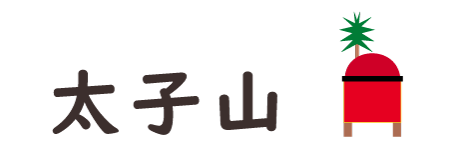
Taishi-yama(太子山) The deity on this yama represents the Crown Prince ("Taishi" in old Japanese) Shotoku of the 6th century. He is famous for laying the foundation of Buddhism in Japan, and therefore, has been widely worshiped by people regardless of their religious sects. A legend concerning him is the origin of this float. When he was to establish Shitennouji Temple, he climbed a mountain himself in search of fine wood. On the mountain, an old man told him about a tall sacred cedar, and he built a hexagonal temple there. In accordance with this story, this is the only yama which uses cedar tree for its Shingi pole, while other floats are surmounted with pine trees. The prince's figure on the yama, made in the Edo period (1600 - 1867), depicts his noble image in a white short-sleeved kimono wearing his trademark hair-style, a hair lobe on each side of his round face. Copyright (c)2019 The Kyoto Shimbun Co.,Ltd. All rights reserved.
 長刀鉾
長刀鉾

Naginata-hoko(長刀鉾) The Naginata Hoko float leads the procession of the Hoko and Yama floats. The order of the floats is decided by drawing lots; however the Naginata Hoko float is an exception and has been privileged to head the procession for some years. The name Naginata is derived from the great halberd crowning the float, made by Sanjo-Kokaji-Munechika, a master of sword smithing during the Heian period (794-1185). Munechika dedicated the halberd to Yasaka Shrine, as an offering for the recovery of his daughter from disease; however, there was a warrior during the Kamakura period (1192-1334) who used the halberd often. It is said that while the halberd was in his possession, mysterious things occurred time and again, so the warrior eventually returned it to the shrine. In 1522, when an epidemic prevailed in the city, the halberd was displayed in Naginata-hoko town as directed by an oracle, and miraculously, the epidemic died down. It is believed that this hoko was built in 1441. The length of the halberd pole, called a Shingi, is twenty meters. Today, this is the only hoko which carries the sacred child, Chigo, during the proceedings. Copyright (c)2019 The Kyoto Shimbun Co.,Ltd. All rights reserved.
 伯牙山
伯牙山

Hakuga-Yama(伯牙山) Since there has been no public place to display the "Hakuga Yama" float after World War II, it has been placed at the Sugimoto Residence, the traditional wooden townhouse on Aya-no-koji-dori Street. Every year, during the Gion Festival, they remove the wooden screens in the entrance hall so that passers-by can enjoy the decorations. The doll sitting in front of the koto (Japanese traditional harp) with a hatchet is Hakuga, a Chinese virtuoso of harp in the era of the Chin dynasty (265-420). The float depicts the scene in which Hakuga, with enraged eyes and flushed cheeks, is about to destroy his harp in desperate grief at the news of his best friend's death. Many yama floats were forced to rename themselves in the Meiji Era, and there is a record that this float was also renamed from "Kotowari (breaking a harp) Yama" to "Hakuga Yama". Copyright (c)2019 The Kyoto Shimbun Co.,Ltd. All rights reserved.
 Higasinotoin St.
Higasinotoin St.
 Takoyakushi St.
Takoyakushi St.
 Nishinotoin St.
Nishinotoin St.
 木賊山
木賊山

Tokusa-yama(木賊山) This yama features a scene from one of Zeami's Noh chants, "Tokusa", or a kind of scouring rush. The figure in this float is an old man who came to cut mares' tails. He is dancing in memory of his beloved child who was kidnapped a long time before. The life-size figure of an old man holds a sickle in his right hand and a bunch of mares' tails in his left hand. The year 1692 is written on the base of the figure in Chinese ink. Copyright (c)2019 The Kyoto Shimbun Co.,Ltd. All rights reserved.
 放下鉾
放下鉾
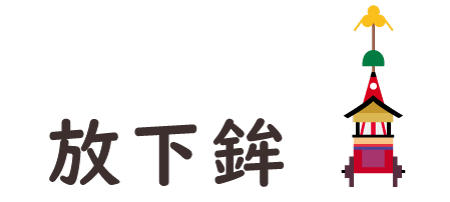
Houka-hoko(放下鉾) This name comes from the Hohge priest's image enshrined on the deity platform at the middle of the Shingi pole. The Hohge priest was a priest who did juggling performances on the street while preaching the faith to the people. On top of the pole are symbols of three lights; the sun, the moon and the stars, shining on the world below. The shape resembles the Suhama family crest; therefore it is also called the Suhama Hoko. Like the Naginata Hoko, this hoko once carried a sacred child, but a sacred doll has replaced this since 1929. The doll, which His Imperial Highness Prince Taka of Kuni named Sanko-maru (sanko meaning 'three lights'), can be manipulated to dance on the float in the same way as the sacred child does during the procession. Copyright (c)2019 The Kyoto Shimbun Co.,Ltd. All rights reserved.
 白楽天山
白楽天山

Hakurakuten-yama(白楽天山) This float features the figures of two men. The man wearing a Chinese-style crown is Bai Letian ("Haku Rakuten" in Japanese), a Chinese poet during the Tang dynasty who is famous for his splendid poems like Changhenge. The other man with a priest's hood is Daolin, a Chinese priest of Zen Buddhism. This yama depicts the scene where Bai Letian questioned Daolin about what Buddhism is. This float also has gone through a succession of cruel hardships. It lost the mainframe of its body and the torso parts of the figures in the great fires in 1788 and 1864. Each time, the float had to leave the parade to undergo restoration work. The front tapestry depicts one scene from the Trojan War. Copyright (c)2019 The Kyoto Shimbun Co.,Ltd. All rights reserved.
 函谷鉾
函谷鉾
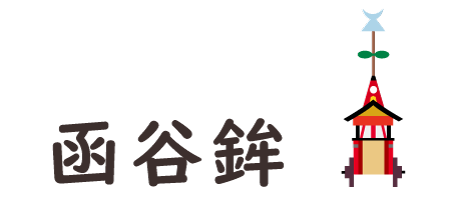
Kanko-hoko(函谷鉾) The design of this hoko is based on a Chinese chronicle of a lord, Meng Changjun of Qin. During the Chinese Warring States period (B.C.476- 221), King Zhaoxiang (B.C. 306-251) of Qin invited Lord Meng Changjun to serve as the prime minister for his country. However, due to slanderous reports during the course of his leadership, Meng Changjun tried to escape from the Qin capital of Xianyang. He made it to the Han Gu Guan barrier, but found the barrier gate would open only when the cocks crowed. Fortunately, one of his subordinates could imitate this, and soon the cocks crowed in chorus, the gate opened, and Meng Changjun was able to successfully escape. On this hoko, the length of the Shingi pole is twenty-two meters. Its top is covered by triangle-shaped white linen, and an upwards-facing crescent symbol. Copyright (c)2019 The Kyoto Shimbun Co.,Ltd. All rights reserved.
 孟宗山
孟宗山

Moso-yama(孟宗山) Meng Zong (Moso in Japanese) is a paragon of a man from "Records of Filial Piety in 24 Chapters" compiled in the Yuan dynasty, China. When his mother was seriously ill, he walked around a snow-covered bamboo grove looking for a bamboo shoot, her favorite delicacy. As it was a cold winter, it was very hard to find one, and he became totally exhausted. However, when he finally flopped onto the ground, he found one under the snow. His mother fully recovered after eating it. The town that owns this yama, Takanna, which means bamboo, was also named after this story. The main tapestry was painted by Seiho Takeuchi (1864-1942), a leading painter of the age who introduced European realism to innovate Japanese art culture. The tapestry depicts a bamboo grove on a white background with a powerful and dynamic touch. This simple black and white tapestry stands out well among the richly colored tapestries of other yama and hoko. Copyright (c)2019 The Kyoto Shimbun Co.,Ltd. All rights reserved.
 Rokkaku St.
Rokkaku St.
 綾傘鉾
綾傘鉾

Ayagasa-hoko(綾傘鉾) Although it has "hoko" in its name, it is a parasol-shaped float unlike a traditional "hoko", and it has a long history with its origin dating back beyond Ohnin-no-ran, the decade long battle that started in 1467. Destroyed by the fire in 1864, the hoko was once restored in 1879, but it left the parade again soon after that. Finally, it returned to the parade in 1979. Its form has also been changed many times. This float was originally shouldered by marchers. However, it was converted to a "pull-style" float in the Edo period. An existing old picture of this hoko from those days shows a huge parasol made of gorgeous fabrics placed on the roof of a court carriage. It was restored as a "shoulder float" again in 1879, and will be shouldered this year as well. In the procession, a troop of musicians plays bells and drums around a demon-masked main dancer swinging a rod. Copyright (c)2019 The Kyoto Shimbun Co.,Ltd. All rights reserved.
 鶏鉾
鶏鉾
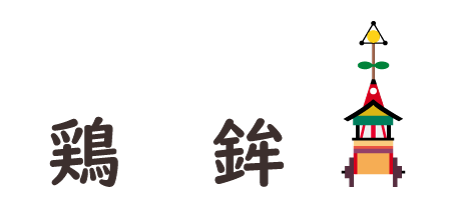
Niwatori-hoko(鶏鉾) The origin of this hoko is said to be one of the Chinese legends, Kanko, and is also said to be a story of Kojiki about the goddess Amaterasu-Oomikami and singing birds that never get old and die. The Kanko is the story about the Chinese legendary Emperor Yao, who is said to have established the Chinese calendar system more than 4000 years ago. He set a drum outside the imperial court and encouraged the people to hit it when they had any complaints. Furthermore, he erected a wooden post and counseled the people to write their complaints on it. From that day onwards, it is said that the society lived in peace and security, so much so that the drum even become a home for the cocks (the Niwatori of Niwatori Hoko means 'cock'). The crown of the hoko is a triangle frame with rolled-up red and white cloth. In addition, a copper disk is fitted inside the triangle, and a bundle of linen fibers are attached to each of three corners. Copyright (c)2019 The Kyoto Shimbun Co.,Ltd. All rights reserved.
 月鉾
月鉾
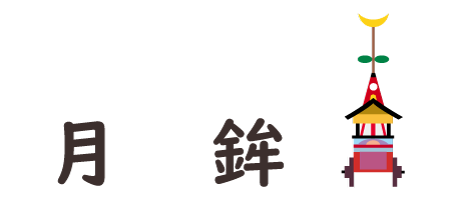
Tuki-hoko(月鉾) The Kojiki, "Records of Ancient Matters", says that when Izanagi-no-mikoto had himself purified after coming back from the land of the dead, three deities were born; the sun goddess Amaterasu-Oomikami when Izanagi washed his left eye, the moon god Tsukiyomi-no-mikoto when he washed his right eye, and the storm god Susanoo-no-mikoto when he washed his nose. Tsukiyomi-no-mikoto not only governs the world of night, but is also the god of water. The name of Tsuki Hoko comes from this ancient story, tsuki meaning 'moon'. At the top of the Shingi pole is a golden crescent, forty centimeters in width and twenty-four centimeters in length. At the middle of the pole, just under the deity platform with the Tenno divine symbol on it, a ship-shaped basket is attached. Despite a large fire in 1864, it lost only the pole. Copyright (c)2019 The Kyoto Shimbun Co.,Ltd. All rights reserved.
 山伏山
山伏山

Yamabushi-yama(山伏山) The name "Yamabushi," a mountain ascetic, comes from the outfit worn by the deity that is carried on the yama. Among the 23 floats in Saki-no-Matsuri, the first part of the parade, this yama comes from the northernmost town. Like En-no-Gyoja Yama, Yamabushi Yama was inspired by the popular folk belief of the time in yamabushi and their practice of Shugendo, an ancient shamanistic religion. The front grand drape was brought from China, and gorgeously depicts a dragon in the clouds, big blue waves and a kylin, a deer-like mythical creature, in exquisite embroidery. The main tapestry at the back is also said to have been made in China during the Ming dynasty. The mountain ascetics from Shogoin Temple visit this yama to worship the deity on July 15. Copyright (c)2019 The Kyoto Shimbun Co.,Ltd. All rights reserved.
 四条傘鉾
四条傘鉾
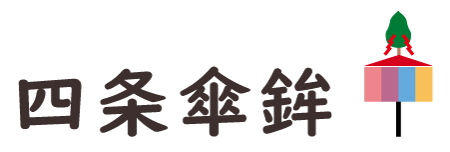
Shijokasa-hoko(四条傘鉾) This hoko float made a remarkable comeback to the parade in 1987 after 117 years of absence. It continued participating in the parade even after the 1864 battle fire, but from 1872, it ceased participation and the equipment was scattered and lost. It was revived with the help of the Mibu Rokusai chant and dance group as Ayagasa Hoko also was. This hoko maintains the original shape of the umbrella-type hoko of the Ohnin era (1467-1469), with a flowery umbrella consisting of a huge arabesque-designed umbrella with a colorfully dyed silk canopy. The procession of rod bearers wearing the Shaguma Oni brown bear devil mask, dancers, and musicians is rather simple, but pleasant. Copyright (c)2019 The Kyoto Shimbun Co.,Ltd. All rights reserved.
 占出山
占出山

Urade-yama(占出山) The doll with a fishing rod represents Empress Jingu, a mythical empress of the 3rd century. This yama originates from the legend that she predicted victory in the coming battle by catching a trout when fishing in a river in Hizen, the northwest part of Kyushu. This yama had been called by its nickname, Aiwai Yama, until the Meiji era (1868-1912), and it shows how popular the yama was among local people. The new side tapestries were completed in 1991 after 10-years of work, perfecting the colorful suite of pictures of the three most scenic spots in Japan. The grand drapes picturing the 36 most famous poets, including Ariwara-no-Narihira, also attracts people. The 36 poets were selected from the poets of the 7th to 10th centuries by Fujiwara-no-Kintou, a poet in the 10th and 11th century. Copyright (c)2019 The Kyoto Shimbun Co.,Ltd. All rights reserved.
 船鉾
船鉾

Fune-hoko(船鉾) The origin of the Fune Hoko (Fune means "a ship" or "a boat") is a story from Chronicles of Japan: Empress Jingu crossed the sea to conquer the Shilla Kingdom on the Korean Peninsula. The figure of Empress Jingu, stored inside the houseboat-shaped float, wears a mask, a crown, a long-sleeved jacket in dark blue and golden silk, a pair of intricately decorated scarlet pants and dignified scarlet amour. The Empress gave birth to the 15th Emperor of Ohjin. Following the Empress's example, the deity figure wears the bleached white clothes around its body, which are given away as maternity girdles for easy deliveries after the procession. The head of the boat is crowned by Geki, a legendary phoenix bird. The Geki is 1.3 meters in height and 2.7 meters in wingspan. Copyright (c)2019 The Kyoto Shimbun Co.,Ltd. All rights reserved.
 祇園祭説明
祇園祭説明

Gion festival In 2009 the festival was registered as an Intangible Cultural Heritage by UNESCO. Originally, the Yamahoko float procession was considered to be the forerunner of "Mikoshi-togyo" or portable shrine parades. There are two processions: one that proceeds the Shinko-sai ritual called "Saki-matsuri," or the former festival, and the other that proceeds the Kanko-sai ritual called "Ato-matsuri" or the latter festival. Although Saki-matsuri and Ato-matsuri had been united due to consideration of traffic congestion and tourism promotion since the high economic growth period, it was decided to separate them again in order to restore their original style. In 2014, the Yamahoko float procession of Ato-matsuri was restored after nearly half a century. Assembly of the floats for Saki-matsuri begins around July 10, and "Hikizome," or first pulling of the floats, is performed around July 12. After the events of July 14, 15 and 16, called Yoiyoiyoiyama, Yoiyoiyama and Yoiyama respectively, the 23 Yamahoko floats of Saki-matsuri proceed through the main streets of Kyoto accompanied by festive music on July 17. On that evening the Shinko-sai ritual, where three portable shrines transporting the deities of Yasaka Shrine are carried to Otabisho in Shijo-Teramachi, is performed. On the day after the Yamahoko float procession of Saki-matsuri, assembly of the floats for Ato-matsuri begins. The days from July 21 to 23 are its Yoiyama period, and the Yamahoko float procession of Ato-matsuri is performed on July 24. "Hanagasa Junko" parade is also held on the same day. In the evening, the Kanko-sai ritual is held in which the portable shrines are returned to the shrine from Otabisho. Until the Saki-matsuri Yamahoko float procession = Residents, including women, can also take part in "Hikizome," which is held around July 12. Visitors can enjoy the Yama and Hoko floats illuminated by the light of lanterns in each float community until Yoiyama on July 16. Visitors can get "Chimaki," a talisman against evil, and lucky charms for academic achievement, success in life or other goals at each Yamahoko float. The Saki-matsuri Yamahoko float procession (July 17) = At 9:00 a.m., a total of 23 Yamahoko floats set off from near Shijo-Karasuma. After heading east on Shijo-dori Street, they go north on Kawaramachi-dori Street, and then west on Oike-dori Street. Highlights of the procession are "Shimenawa-giri," or a ritual in which Naginata Hoko's sacred child cuts a sacred rope at Shijo-Fuyacho, and "Tsuji-mawashi," the ninety-degree turn made by the floats at each intersection. Until the Ato-matsuri Yamahoko float procession = Preparation of floats for Ato-matsuri begins the day after the Yamahoko float procession of Saki-matsuri. As opening street stalls is restricted during Yoiyama, the authentic festival atmosphere can be enjoyed. Ato-matsuri Yamahoko float procession (July 24) = At 9:30 a.m., a total of ten Yamahoko floats set off from near Karasuma-Oike. They follow along the same course as Saki-matsuri, but in the reverse direction. Highlights are the restored O-Fune Hoko float and "Tsuji-mawashi" turns which are performed the opposite way of the turns during Saki-matsuri. The Hanagasa Junko parade, which had long been held in lieu of the Ato-matsuri procession prior to its restoration, proceeds through Oike-dori Street and Kawaramachi-dori Street, as if it were following Ato-matsuri procession. Copyright (c)2019 The Kyoto Shimbun Co.,Ltd. All rights reserved.



